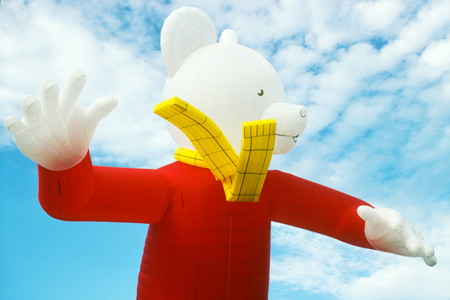 When framing a subject in a viewfinder, it is important to see not only the subject but also how it fits into the whole area of the photograph. Decide which way the camera should be positioned for the best effect - landscape or portrait (when the frame is not square). Then have a look at the space around the subject and ask whether it is beneficial, and hence whether it is needed or not. Appropriate use of space or out-of-focus areas in an image can contribute a great deal to a composition, but it is also common to find areas which are just not needed.
When framing a subject in a viewfinder, it is important to see not only the subject but also how it fits into the whole area of the photograph. Decide which way the camera should be positioned for the best effect - landscape or portrait (when the frame is not square). Then have a look at the space around the subject and ask whether it is beneficial, and hence whether it is needed or not. Appropriate use of space or out-of-focus areas in an image can contribute a great deal to a composition, but it is also common to find areas which are just not needed.
Photographers who developed their skills using transparency film are often better equipped to do all this in a viewfinder, because the slides they produced were their final output unless they were printed. They therefore learned to get composition right in the camera. Other photographers are more accustomed to leaving a little space around a subject and deciding at printing stage how much of an image should be cropped off. It is a good idea to work with a couple of strips of cardboard to visualize how a print would look if cropped in various ways. Digital photographers are able to visualize the same effects using the cropping previews available in various software packages.
Another thought, even a rule of thumb, is that there is almost always another image within the one being created. Always try going closer to the subject for another shot - and then maybe closer again. Don't be constrained by the standard landscape and portrait camera positions. Try rotating the camera to various angles and see in what other ways the subject might be framed. Diagonal lines are often strong, and images framed in this way can be surprisingly dynamic. Also, when preparing an image for printing, make sure that all the cropping options have been explored. There may be a panoramic image within the standard 1.5:1 aspect ratio - either horizontally or vertically orientated. There may also be a square image, or just a different picture waiting to be cropped out of the original frame in standard format.






